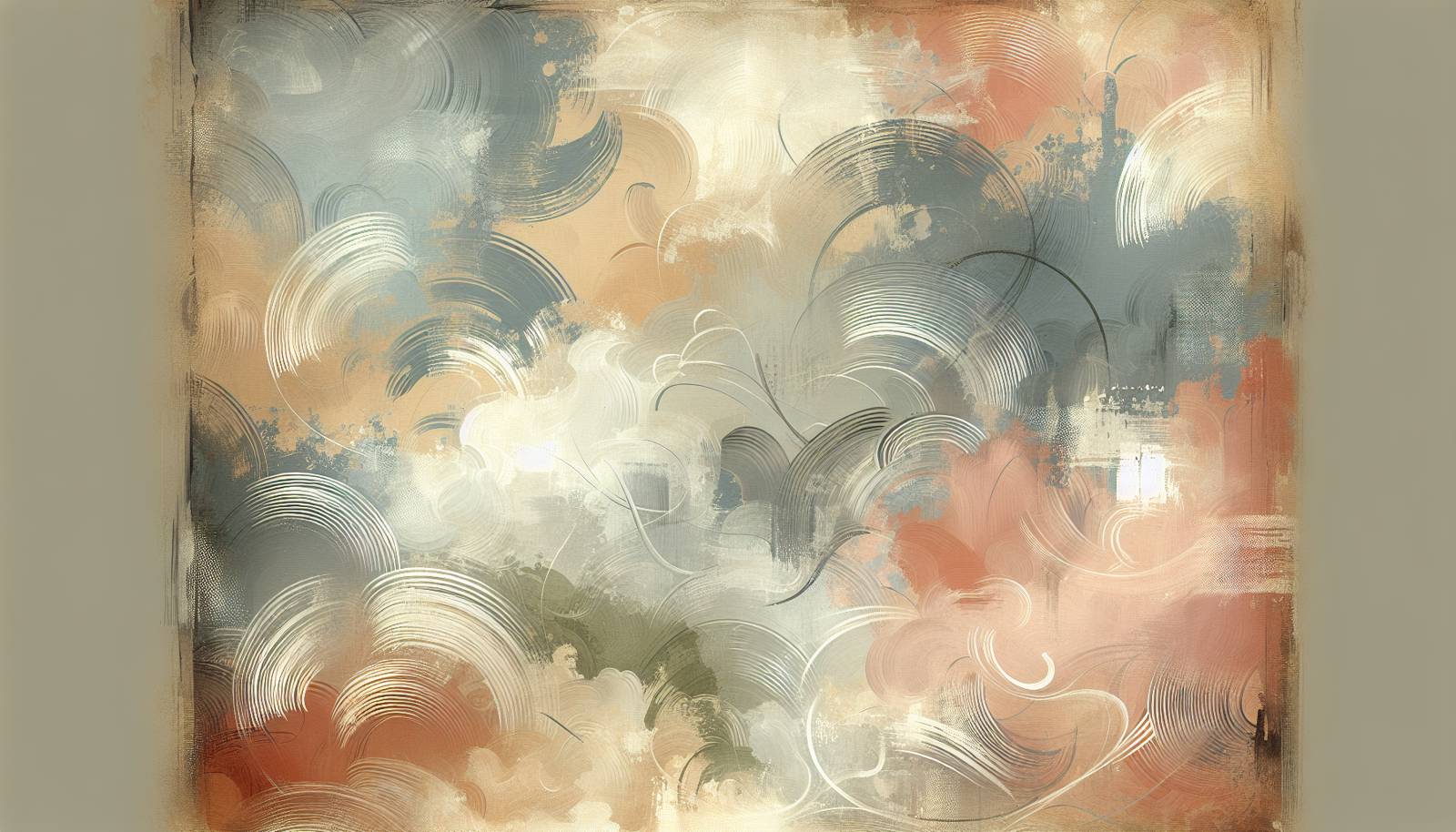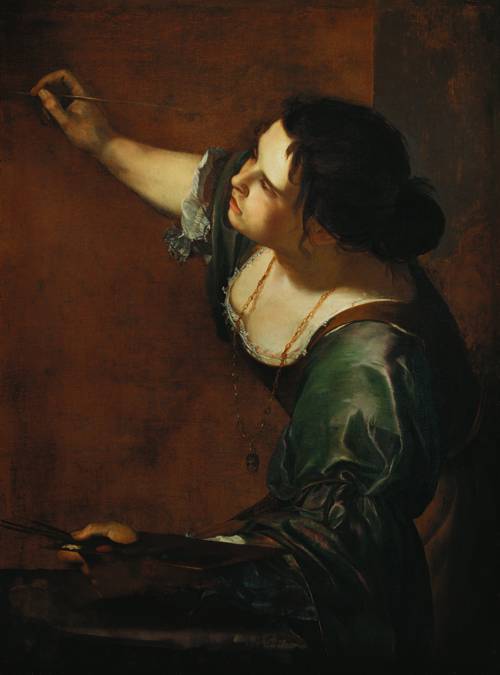
FAQ About Artemisia Gentileschi

Who was Artemisia Gentileschi?
Artemisia Gentileschi was an Italian Baroque painter known for her powerful and often dramatic depictions of women from myth and the Bible. She was born on July 8, 1593, in Rome, and became one of the most accomplished artists of her time, despite the challenges she faced as a female artist in a male-dominated society. Her works are noted for their use of color, movement, and realistic portrayal of female figures.

What are some of Artemisia Gentileschi's most famous paintings?
Some of Artemisia Gentileschi's most famous paintings include "Judith Slaying Holofernes," which powerfully depicts the biblical story of Judith beheading the Assyrian general Holofernes. Other notable works include "Susanna and the Elders," "Self-Portrait as the Allegory of Painting," and "Jael and Sisera." Her paintings are celebrated for their vivid detail and strong, emotive figures.

Why is Artemisia Gentileschi considered a feminist icon?
Artemisia Gentileschi is considered a feminist icon because she broke through the barriers of a male-dominated art world during the Baroque period. She often painted women as strong and assertive figures, challenging traditional portrayals. Her personal history, including the experience of a highly publicized rape trial, also resonates with modern discussions about gender and the empowerment of women.

What challenges did Artemisia Gentileschi face during her career?
Artemisia Gentileschi faced significant challenges in her career, particularly due to her gender. As a woman in the early 17th century, she was often excluded from formal artistic training and patronage opportunities available to male artists. Additionally, she suffered from personal trauma, including being raped by her mentor Agostino Tassi, which led to a public trial that affected her reputation and career. Despite these hurdles, she achieved significant success and recognition.

How did Artemisia Gentileschi's trial affect her life and work?
The trial following Artemisia Gentileschi's rape by Agostino Tassi had a profound impact on her life and work. The public nature of the trial caused personal and professional turmoil, yet it also influenced her art. Many scholars believe that her depictions of powerful female figures in works such as "Judith Slaying Holofernes" are informed by her own experiences of overcoming adversity and asserting strength in the face of victimization.

What themes are common in Artemisia Gentileschi's artwork?
Common themes in Artemisia Gentileschi's artwork include the strength and resilience of women, often depicted in scenes from the Bible or mythology. Her paintings frequently portray female protagonists in empowered and active roles, challenging traditional narratives. Themes of justice, revenge, and resilience are also prominent, reflecting her personal experiences and the evolving roles of women in society.

How did Artemisia Gentileschi learn to paint?
Artemisia Gentileschi learned to paint primarily through the tutelage of her father, Orazio Gentileschi, who was an accomplished painter himself. She gained foundational skills in his workshop, where she learned techniques of the Baroque era and developed her own distinctive style. Despite limited access to formal education and artistic academies as a woman, her talent and determination allowed her to excel and innovate in her craft.

Where can you see Artemisia Gentileschi's works today?
Artemisia Gentileschi's works are housed in several prominent museums around the world. Some of her pieces can be seen at the Uffizi Gallery in Florence, the National Gallery in London, and the Museo di Capodimonte in Naples, among others. Many of her paintings are also part of private collections and are occasionally featured in special exhibitions dedicated to her work.

What was Artemisia Gentileschi's influence on Baroque art?
Artemisia Gentileschi's influence on Baroque art is significant due to her unique ability to combine dramatic, emotive realism with bold narratives featuring strong female protagonists. Her work challenged traditional gender representations and added a new dimension to Baroque art by emphasizing female subjectivity and authority. Her legacy continues to inspire modern artists and is a key subject in the study of feminist art history.

Did Artemisia Gentileschi have any children?
Yes, Artemisia Gentileschi had at least one daughter named Prudenzia, who was born when Artemisia married Pierantonio Stiattesi, a Florentine artist. Although not much is known about her daughter's life, Artemisia's legacy continued through her work and her impact on the art world.

How did Artemisia Gentileschi's style evolve over time?
Artemisia Gentileschi's style evolved significantly throughout her career as she traveled and worked in different cultural contexts, such as Rome, Florence, Venice, and Naples. Her early works bear the influence of Caravaggio with their dramatic lighting and realistic figures. Over time, her color palette expanded, and her compositions became more complex, reflecting both personal growth and the diverse artistic environments she engaged with.

Was Artemisia Gentileschi's art recognized in her own time?
Yes, Artemisia Gentileschi's art was recognized and appreciated during her own time. Despite facing societal challenges due to her gender, she achieved substantial fame and success. She received patronage from influential figures such as the Medici family and King Charles I of England, and her reputation as a talented artist spread widely across Europe.

What is Judith Slaying Holofernes about?
"Judith Slaying Holofernes" is one of Artemisia Gentileschi's most famous works, which depicts the biblical story of Judith, a Jewish widow who heroically beheads the Assyrian general Holofernes to save her people. The painting is celebrated for its dramatic intensity, dynamic composition, and its portrayal of Judith as a powerful and determined woman, which is interpreted as a reflection of Artemisia's own life experiences.

How has Artemisia Gentileschi's legacy been preserved in modern times?
Artemisia Gentileschi's legacy has been preserved through the continued appreciation and study of her work by art historians, researchers, and exhibitions worldwide. Her paintings have been included in major museum collections and celebrated for their historical and feminist significance. Recent scholarship and exhibitions have further highlighted her importance, contributing to a growing recognition of her role in art history and as an early advocate for women's agency.

Did Artemisia Gentileschi work with any notable patrons?
Yes, Artemisia Gentileschi worked with several notable patrons throughout her career. She was patronized by Cosimo II de' Medici in Florence, was invited to London by King Charles I, and received commissions from prominent members of the Italian nobility and European aristocracy. These relationships not only supported her financially but also helped cement her reputation as a leading artist of her time.

What was the historical context of Artemisia Gentileschi's career?
Artemisia Gentileschi's career unfolded during the early Baroque period, a time characterized by dramatic art styles and the Counter-Reformation's influence on religious artwork. As an artist, she navigated the complexities of being a professional female painter in the male-dominated art world of 17th-century Italy. This period also saw burgeoning interest in the individual artist's vision and the powerful expression of emotion in art, both of which are evident in her works.

Are there any books or films about Artemisia Gentileschi?
Yes, there are several books and films about Artemisia Gentileschi that explore her life and work. Notable books include "Artemisia" by Anna Banti and "The Passion of Artemisia" by Susan Vreeland, which fictionalize her life story. Films like "Artemisia" (1997), directed by Agnès Merlet, offer a dramatized portrayal of her life and artistic journey. These works help bring wider attention to her contributions and challenges.

How did Artemisia Gentileschi's upbringing influence her art?
Artemisia Gentileschi's upbringing had a significant influence on her art. Growing up in a family of artists, she was immersed in the art world from a young age. Her father, Orazio Gentileschi, provided her with artistic training and access to his workshop, which was crucial for her development. This early exposure to art instilled in her a strong foundation in the techniques of the Baroque style and inspired her thematic focus on powerful women.

Did Artemisia Gentileschi have any artistic training outside of her father's workshop?
No, Artemisia Gentileschi did not have formal training outside of her father's workshop, which was quite common for female artists of her time. Her father, Orazio Gentileschi, was her primary mentor and teacher. Under his guidance, she developed her skills and style within the confines of his artistic environment, although she eventually distinguished herself with her unique approach and subject matter.

What impact did Artemisia Gentileschi's trial have on art history?
The trial of Artemisia Gentileschi is often cited in art history as a significant event that highlights the challenges faced by women in the art world and broader society. The impact of her trial reaches beyond legal proceedings, as it brought attention to issues of sexual violence and gender inequality. Her continued success despite this adversity, and the empowerment themes in her artwork, have made her a symbol of resilience and strength in art historical narratives.
